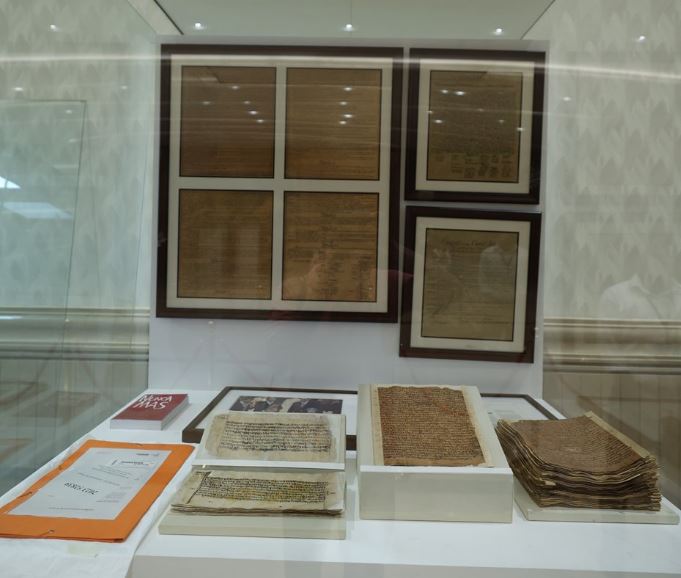New Delhi: Certified original copies of the US’ Charters of Freedom, a ‘fahua’-lid jar from China, and Panini’s grammar treatise “Ashtadhyayi” from India are among the historic items displayed at the Bharat Mandapam as part of a G20 ‘culture corridor’.
The one-of-its-kind project was unveiled on Saturday, coinciding with the opening of the summit.
The exhibition of artefacts — in physical and digital form — has been set up on the same floor where the leaders’ meetings took place. They walked through this corridor while moving into and out of the summit room.
The two-day G20 Summit attended by top world leaders ended Sunday. A New Delhi Leaders’ Declaration was adopted after the meeting Saturday.
The ‘Culture Corridor – G20 Digital Museum’ was envisioned by the Union Ministry of Culture under India’s presidency of the bloc as a ‘phygital’ project.
Manuscripts of the Rig Veda from India, a rare copy of the Magna Carta from the UK, and an anamorphic digital image of the Mona Lisa — the 16th century Leonardo da Vinci masterpiece on display at the Louvre in Paris — are among the several artefacts being exhibited at the ‘culture corridor’.
Officials had earlier this month said there was a plan to open the corridor to the public after the summit.
“India’s G20 presidency theme is ‘Vasudhaiva Kutumbakum’ and with this international project, we are walking the talk that the world is one family as we will display cultural objects from all 20 members and nine invited countries as part of this ‘culture corridor’, envisioned as a G20 legacy project, a ‘museum in the making’,” a source had earlier said.
As part of this project, conceptualised about six months ago, India asked each G20 member and invited country to make submissions under four categories — physical object of cultural significance, “iconic cultural masterpiece” in digital format, high-resolution digital content depicting the intangible heritage and natural heritage of each of the countries.
The physical objects have been loaned for a limited period, the source had said.
As an exhibition themed on the ‘Mother of Democracy’ is being also hosted to mark the summit, a fifth segment was added to the ‘culture corridor’ project in which an “ancient artefact related to democratic practices” in physical or digital format was sought from each G20 member and invited country.
In the object of cultural significance category, India has displayed Panini’s “Ashtadhyayi”, the ancient grammar text sourced from the Shri Lal Bahadur Shastri National Sanskrit University, Delhi. In the artefact related to democratic practices category, the Rig Veda manuscript has been displayed.
In the iconic cultural masterpiece category, Bhimbhetka cave paintings from Madhya Pradesh, dating back to approximately 30,000 years, are displayed in digital format, the official had said.
In the artefact related to democratic practices category, the US is sharing “original copies of the Charters of Freedom”, certified by the American government.
The Charters of Freedom refer to three historic 18th century documents of the US — the United States Declaration of Independence, Constitution, and the Bill of Rights.
After India’s presidency of the G20 ends, “this project will have an afterlife and it will be preserved in a digital form in a portal, also containing digital images of the physical objects,” a source said.
“We will be happy to offer it to countries subsequently assuming presidency (of the bloc),” he added.
PTI
